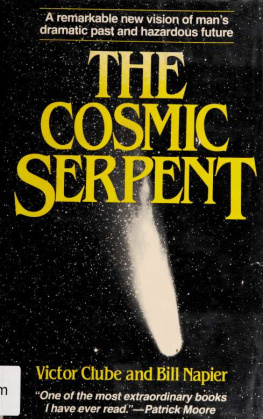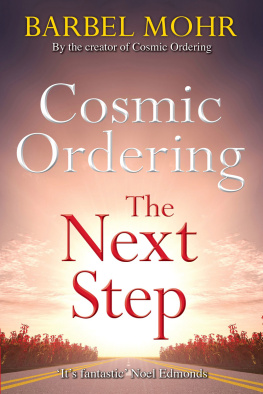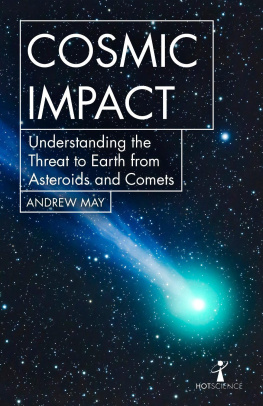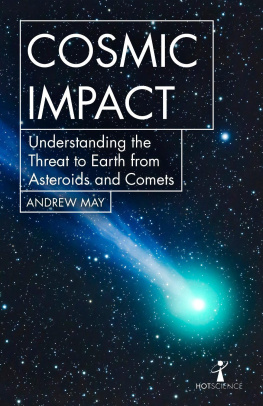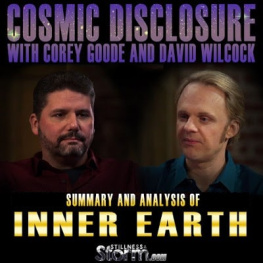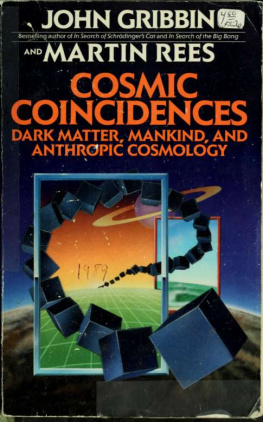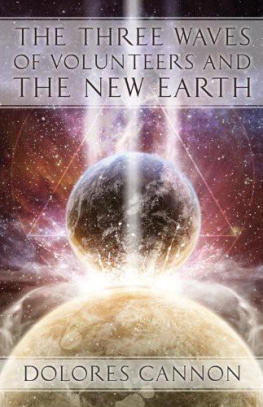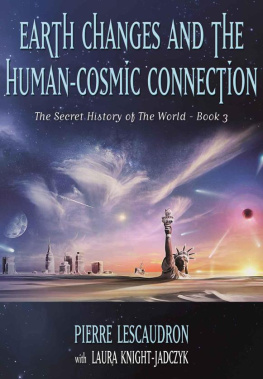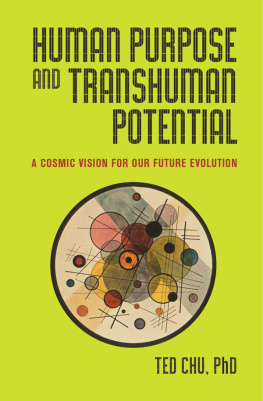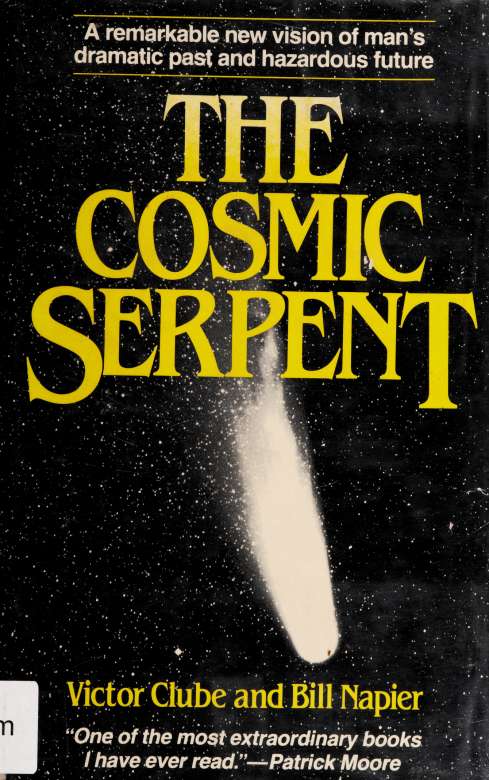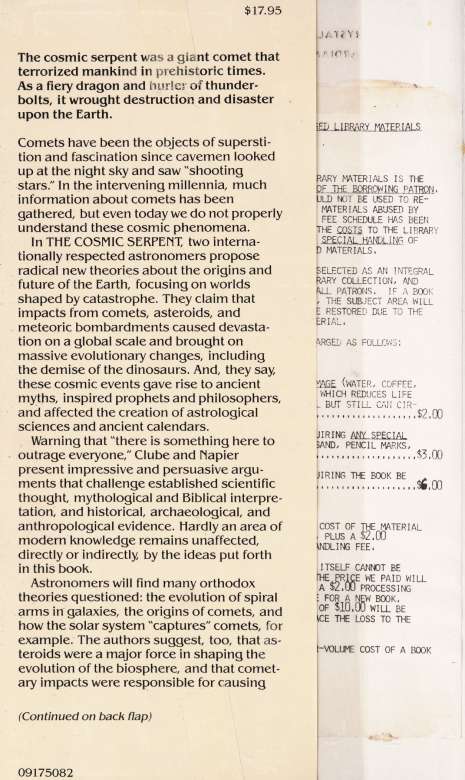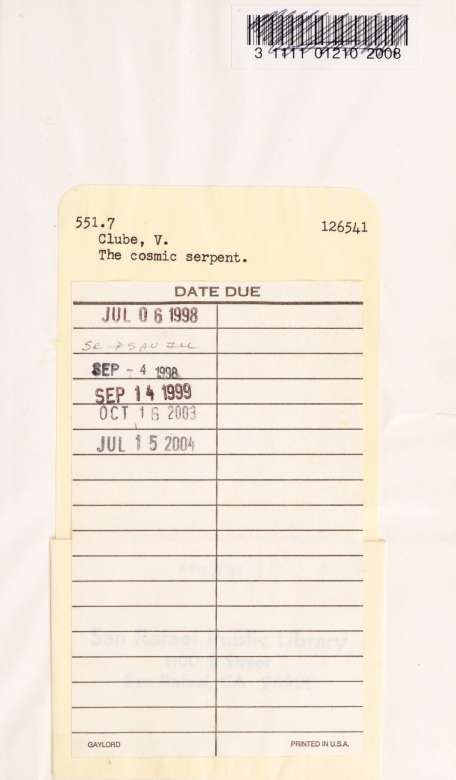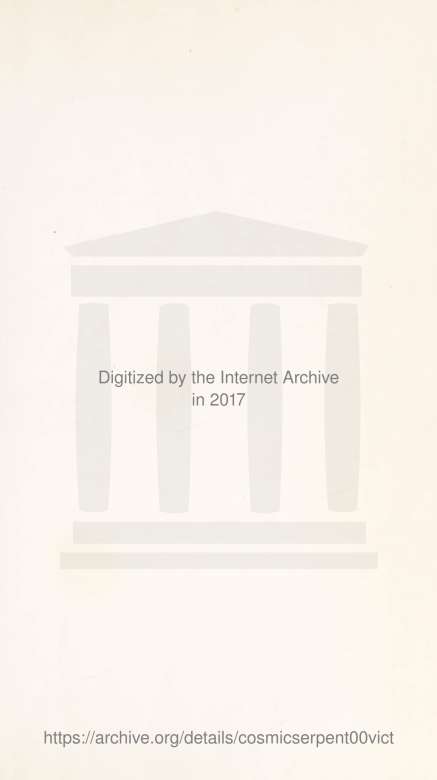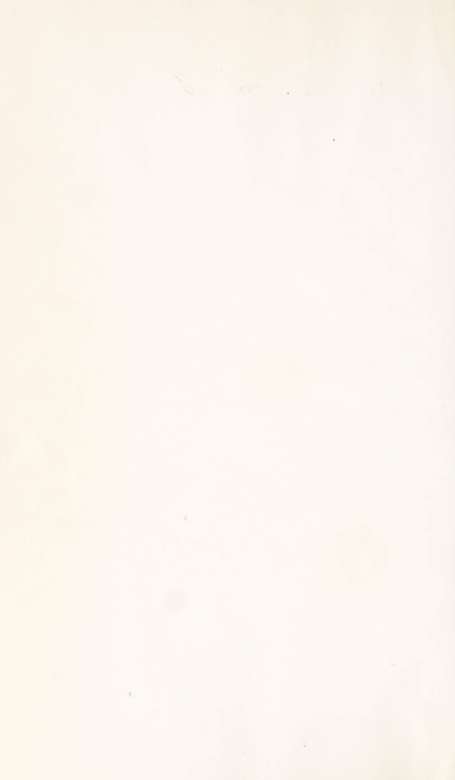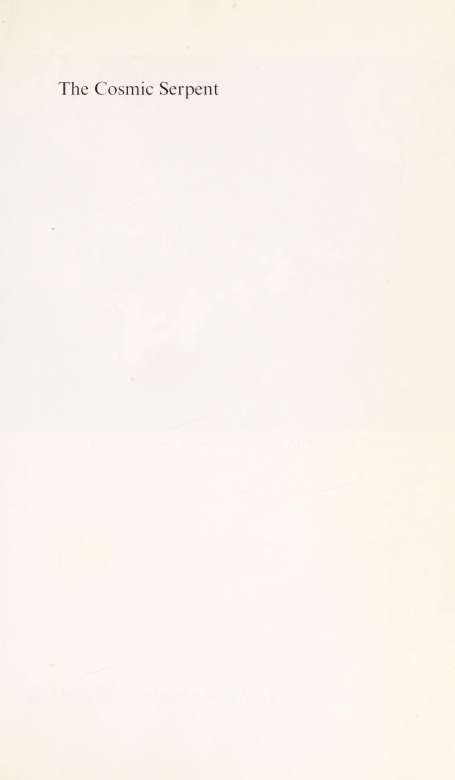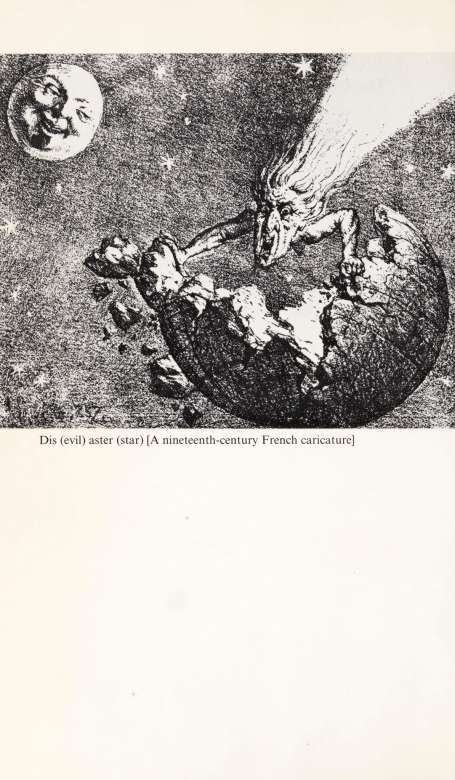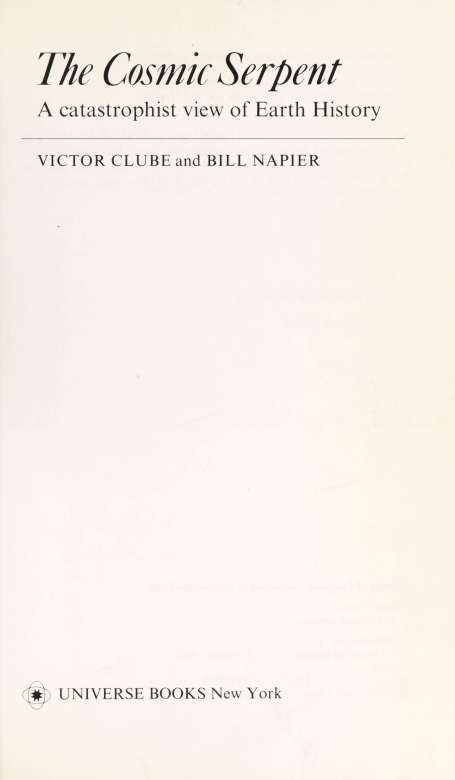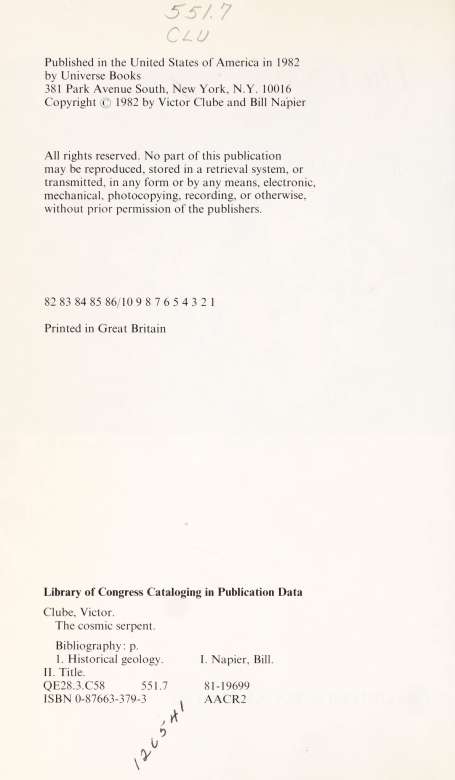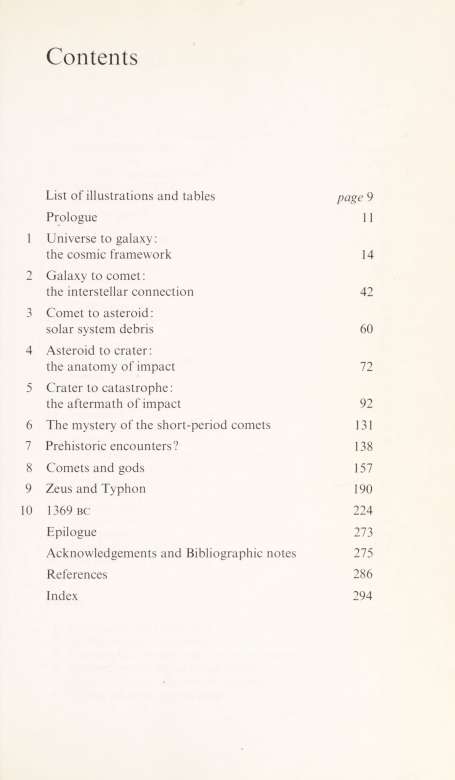This book made available by the Internet Archive.
We dedicate this book to our Other Halves Moira Clube and Nancy Napier without whose perpetual encouragement The Cosmic Serpent might never have uncoiled itself.



*






'

Illustrations and tables
Plates
Figures
page
1 Spiral arms and Gould Belt 19
2 Radial velocities of globular clusters 26
3 Comet orbit through inner planetary system 29
4 Survival probability of comet orbits 36
5 Semi-major axis distribution of comets 37
6 Impact cratering rate ns. time 41
page
7 Meteoroid deposition rate vs. time 43
8 Short-period comet orbits 52
9 Eccentricities and inclinations of asteroid orbits 54
10 Impact explosions: energies and rates 85
11 Wind speed and air temperature with distance
from a billion-megaton explosion 98
12 Species extinction rates during Phanerozoic 104
13 Iridium deposition at Cretaceous-Tertiary boundary 114
14 Proliferation of the families of birds 119
15 Incidence of microtektites at close of Eocene 122
16 Regression and transgression of sea level 125
17 Fireball-meteorite data 142
18 Simulation of bombardment episodes during
5,000-year period 145
19 Lunar meteor storms 149
20 Egyptian chronology and Carbon 14 dates 245
Tables
page
1 Periodicity of geophysical processes 34
2 Short-lived or recent solar system phenomena 70
3 Crater diameters and impact energies and rates 82
4 Geological ages 109
5 Recent terrestrial impact craters 121
6 Low energy impact rates 138
7 Orbital elements of Enckes comet, Hephaistos and
Taurids 153
8 Revised Egyptian chronology 236
Prologue
'If the doors of perception were cleansed, everything would appear to man as it is, infinite.
William Blake,
The Marriage of Heaven and Hell
In this book we bring together hitherto unconnected strands in astronomy, biology and geology, and in the early history and mythology of man.
The unifying theme is the comet, currently thought of as a minor actor in the cosmic drama. We shall propose that it grows out of the cold, dense nebulae found in interstellar space; is captured into the solar system during a close encounter; and if not flung out again, is thrown either into the space between Mars and Jupiter where it becomes an asteroid, or into an orbit which will bring it eventually, in the form of an asteroid, into collision with a planet.
If the planet is the Earth and the asteroid of modest dimensions, the impact destroys life on a global scale and may initiate an ice age. Such visitations are not uncommon on geological timescales and we shall argue that they have played an important and yet unrecognized part in the evolution of life and the history of the Earth. Smaller collisions, catastrophic over say the area of a small nation, are much more common and bring us into the timescale of human existence. We propose that these have occurred in prehistoric and early historic times, and we interpret Biblical and mythological narrative as faithful records of past catastrophes. In this sense a catastrophist view is taken inter alia of biological evolution, geological phenomena, and the ancient history of at least the Mediterranean and Near Eastern peoples.
Of course nothing is really new and the belief that, for instance, comets might sometimes crash on to the Earth took root in the minds of scientific people almost 300 years ago. Thomas Wright wrote around 1755: That comets are capable of distroying such worlds as may chance to fall in their way is, from their vast magnitude, velocity, firey substance, not at all to be doubted. Fifty years later Laplace thought that The seas would abandon their ancient positions, in order to precipitate themselves towards the new equator; a great portion of the human race and the animals would be drowned in the
universal deluge, or destroyed by the violent shock imparted to the terrestrial globe; entire species would be annihilatedand so on.
With the data available in the nineteenth century, these ideas could only be speculation, and they were soon lost, submerged by the bold concepts of uniformity and evolution. But the great explosion of astronomical and other knowledge of the past few years has enabled us to put such early speculations on a scientific footing, and in the pages which follow our debt to scientists and scholars in many fields will be in no doubt.

